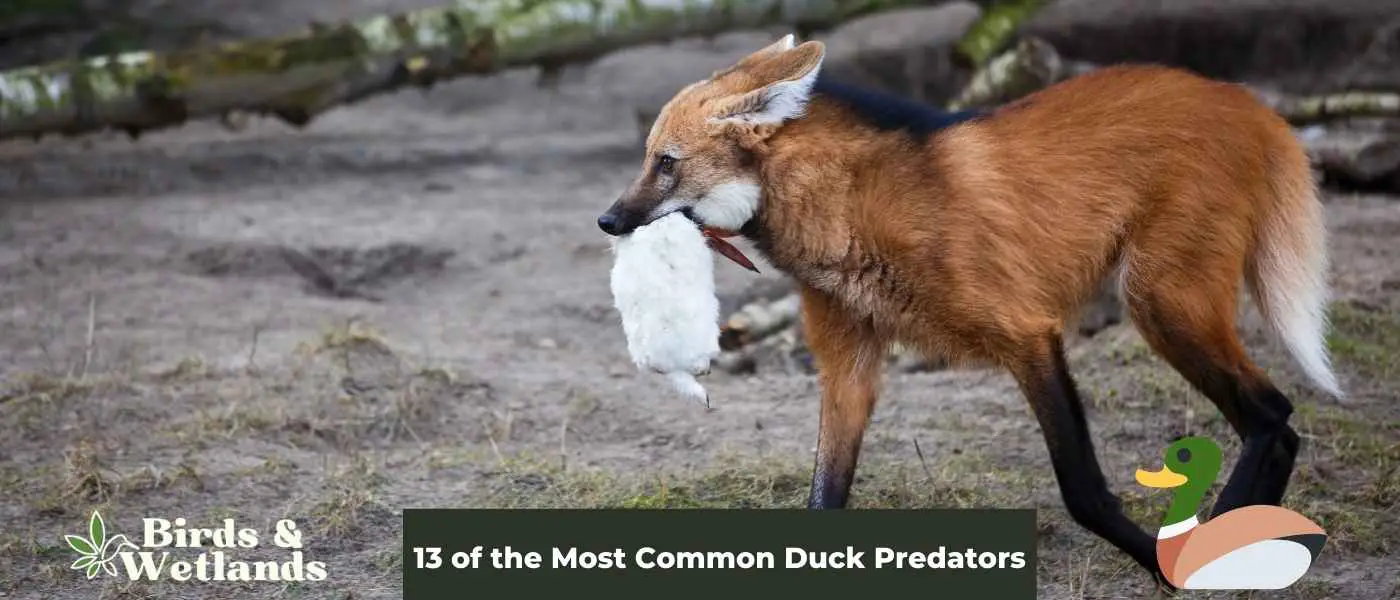Ducks are charming backyard pets. Due to their unassuming nature, they often fall victim to many predators. In fact, ducks are near the bottom of the food chain.
What are common duck predators?
Some of the most common duck predators include foxes, raccoons, birds of prey, snakes, and large fish. Foxes and raccoons often target duck nests, while birds of prey, such as eagles, hawks, and owls, may snatch ducks from the air or the ground.
Snakes are known to prey on duck eggs and ducklings, and large fish, like pike, can grab unsuspecting ducks from beneath the water’s surface. Domestic animals, such as dogs and cats, can also pose a threat to ducks if not properly managed.
Key Takeaways on Predators That Hunt Ducks and Duck Eggs
Ducks have many natural predators, including foxes, coyotes, snapping turtles, raccoons, badgers, and many others.
Many duck predators attack unsuspecting prey such as baby ducks. These animals also eat duck eggs.
There are many preventive measures pet owners can do to avoid attacks from duck predators. These preventive measures include building a proper duck coop, installing a fence and motion detectors and many more.
What Animals Eat Ducks?
Ducks belong to the family Anatidae which also includes geese and swans. Without human intervention, most young and adult ducks often fall prey to many duck predators. Here are 13 natural duck predators (in no particular order):
Foxes
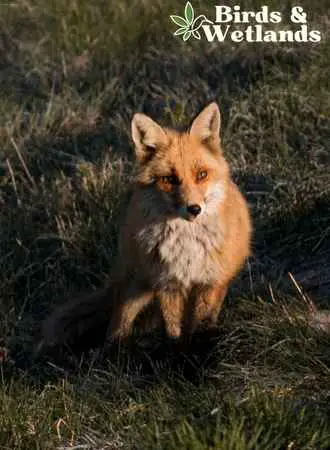
Red foxes are small predatory animals endemic to the Northern Hemisphere. They are usually nocturnal and use their keen senses to track down and stalk prey animals.
One of their favorite foods is the duck meat. Foxes stalk duck families using stealth and cunning until they can single out an individual bird for an attack. They will drag the duck back to its den to feed on its flesh once captured. They are also known to eat duck eggs which are available to them during breeding season.
Although the foxes’ predation on the duck population can be detrimental, they play an important role in maintaining a balanced ecosystem by keeping other species in check.
Snapping Turtles
Snapping turtles are one of the largest freshwater turtles in North America. They got their name from their powerful jaws resembling a bird’s beak. These reptiles have interesting hunting patterns. They hunt by ambushing many animals such as fish, crayfish, frogs, and small mammals.
Snapping turtles are predators of ducks. These animals feed on their prey quickly and efficiently thanks to their powerful jaws and sharp claws. They are known for their tremendous biting force.
When hunting wild ducks, a snapping turtle lies just beneath the water’s surface until it detects a potential meal nearby. They then lunge at the unwary bird and drag it into deeper water to finish it off.
The snapping turtle is an intimidating but fascinating part of our ecosystem due to its powerful jaws and ruthlessness when hunting.
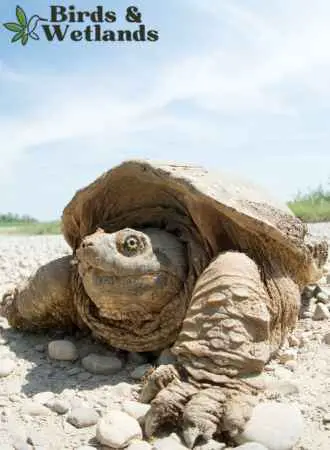
Large Fish
Large fishes are among the duck’s common predators. These fishes include the northern pike, blue catfish and largemouth bass. The largemouth bass is most likely to prey on ducks and ducklings among these fishes.
The largemouth bass is a predatory fish that is native to North America. This voracious hunter catches and consumes prey such as ducks, frogs, and smaller fish with their tough, sharp teeth.
Its preferred hunting strategy is to wait at the water’s surface, where its mottled skin perfectly camouflages itself. When a duck or other unwary target comes within striking distance, the largemouth bass will leap into the air with incredible speed and agility, quickly capturing its prey and dragging it underwater.
This type of ambush hunting is unique to largemouth bass and is one of their most important survival strategies in aquatic environments.
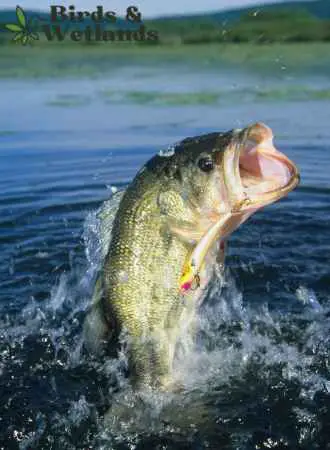
Badgers
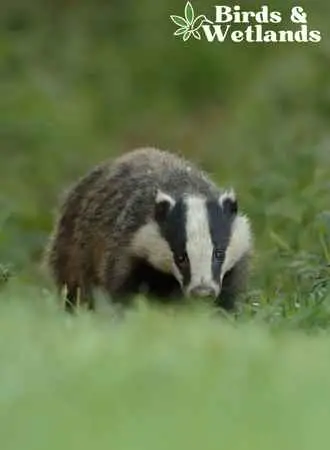
Badgers are large, elusive carnivores that spend most of their time underground. These nocturnal predators typically prey on mice, rabbits, and other small animals, but they will sometimes hunt larger mammals like deer or livestock.
Badgers eat ducklings and duck eggs. They are known for their bold approach to hunting ducks. With their sharp claws and upper teeth, adapted for digging and biting, they can latch onto the backs of swimming ducks and drag them underwater to drown them.
Although this feeding method is relatively uncommon among other carnivores, it is common among badgers due to their strong jaws, sharp claws, and adaptable hunting strategies.
Owls
Owls are solitary animals and nocturnal birds of prey that use their keen senses and talons to hunt and kill other animals.
Owls are major duck predators. These birds of prey frequently watch from a perch and dive down on unsuspecting ducks feeding or resting. They will also swoop in duck eggs from duck nests.
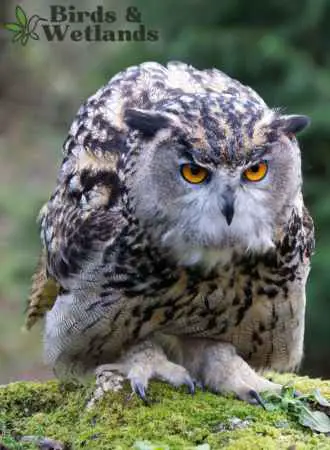
Falcons
Falcons are bird predators that are well known for their incredible skill at hunting. With strong, razor-sharp talons and an agile body shape, falcons are adept at swooping down on unsuspecting prey, such as ducks.
Falcons eat small animals and they use their excellent eyesight to spot the ducks from overhead, identifying them by size and color. Then these primary predators dive in with tremendous speed, typically targeting one duck at a time.
Falcons have very powerful legs and feet that can wrap around their prey tightly once they have pinned it down, preventing it from escaping.
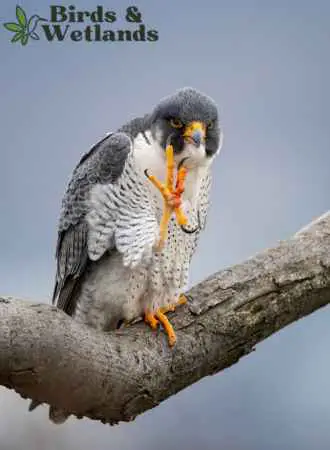
Eagles
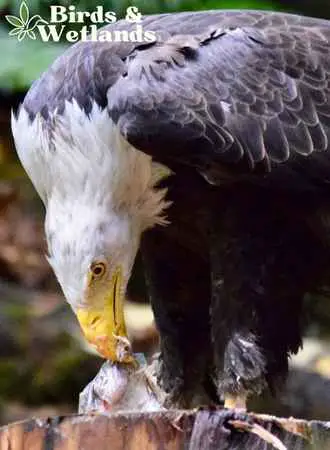
Eagles are apex predators known for their hunting prowess. They prey on various animals, including ducks.
Eagles use their keen eyesight and sharp talons to spot and capture moving targets, such as ducks on the water or in flight. Once they have made a successful kill, eagles will often gorge themselves on their meal, storing food reserves for leaner times.
Crocodiles
Crocodiles are large reptilian predators living in various aquatic and semi-aquatic environments around the world. Their long, narrow snouts, ideal for trapping small prey like fish and careless waterfowl, distinguish them from alligators.
Crocodiles typically ambush their victims from below, dragging them into deep water where they can drown and become incapacitated. After subduing the victim, the crocodile will viciously rip it apart with its serrated teeth, though it may also try to consume it whole.
Raccoons
Raccoons are medium-sized, land-dwelling mammals that are found throughout much of North America. These intelligent animals are expert scavengers and have learned to forage for food in many different environments, from forests to cities.
One of their favorite food sources is duck and duck eggs. Waterfowl birds tend to live near water where aquatic plants and other prey items are abundant. Raccoons are extremely agile, typically sneaking up on unsuspecting ducks without warning before quickly snatching them up with their sharp claws.
Raccoons also prey upon the eggs and chicks that the ducks leave behind in their duck nests. If a raccoon happens to stumble on an unprotected duck nest, it will not hesitate to take what’s available as food.
Coyotes
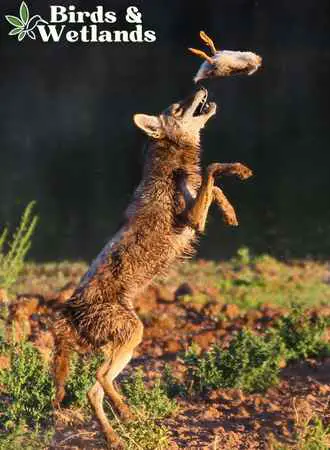
Coyotes are cunning predators that live all over North America. These large canids hunt mostly at night, relying on their keen sense of smell to locate prey. Rabbits, small rodents, and even deer or elk are common prey for hungry coyotes. Ducks are among their favorite prey.
Coyotes have devised a variety of tactics for capturing their aquatic prey, including sneak attacks and organized hunts with other coyotes. They usually ambush unwary ducks near the water’s edge or dive into lakes or rivers to capture swimming birds.
When they catch a duck, they often kill it quickly by biting straight through its spine, then carry it away in their sharp teeth to eat later.
Minks
Minks are small, semi-aquatic animals well-adapted to life in water and on land, boasting a thick, waterproof coat that keeps them warm and dry. They also have webbed feet, short legs and adaptable respiratory mechanisms.
Minks are also agile hunters, using their dexterous front paws to catch and kill their prey. In particular, they have been known to hunt down and attack ducklings.
Snakes
Snakes are well known for their ability to hunt and capture prey by stealth and cunning. One key factor that allows snakes to prey on ducks is their agile, flexible bodies.
Snakes can easily navigate marshes and wetlands where ducks typically roam. As a result, they can often sneak up on unsuspecting ducks from below, capturing them quickly before they can take off or fly away. These reptiles pose a serious threat to duck populations.
Many snake species have developed specialized techniques for trapping and constricting their victims, further enhancing their ability to attack and eat vulnerable young ducklings and adult specimens successfully.
Herons
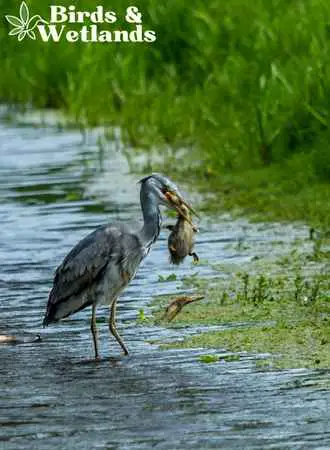
Herons are long, slender birds found in wetlands and along the shores of lakes and rivers. These adaptable creatures have sharp beaks and strong legs, allowing them to prey on a wide range of smaller animals, such as fish, frogs, and young ducks.
While herons hunt in various ways depending on the situation, they typically wait patiently in trees or on the ground until their prey approaches before launching a quick attack with their sharp beak.
Herons will carry their prey back to a secluded area to begin feeding once they have caught it in their beak.
How to Protect Baby and Adult Ducks From Predators
Ducks are docile animals that are extremely vulnerable to predator attacks. As a duck owner, it is important to protect ducks from predators. Here’s how to keep your ducks safe:
Build a Duck House or Duck Pen
Building a duck house is an effective method of protecting ducks from predators and to raise healthy ducks. Ducks face a variety of threats, including birds of prey, large reptiles, and even other mammals.
You can help protect baby and adult ducks from these dangers and give them the best chance of survival by providing them with a safe haven. You can line the trench and the house with hardware cloth.
The structure itself can act as a deterrent to larger creatures that may be able to get inside or use their sharp beaks to peck at the wood or rip off sections of the roof.
Woodlink Cedar Duck Nesting Box
Attract ducks to your wetland area and provide them with a cozy, secure nesting space using the expertly crafted Woodlink Cedar Duck House, made with high-quality materials in the USA.

Pros
- Ornithologically designed: This nesting box is specifically created for ducks, ensuring an optimal environment for them to thrive.
- High-quality materials: Made from re-forested, kiln-dried, inland red cedar, the Woodlink Cedar Duck House is both durable and eco-friendly.
- Easy to install: The nesting box comes fully assembled, with screws included for quick and easy mounting.
- Made in the USA: Take pride in knowing that you are supporting a product that is made domestically, ensuring top-notch quality and craftsmanship.
- Versatile use: While designed specifically for ducks, this nesting box can also be occupied by other species like screech owls, squirrels, and pileated woodpeckers.
Cons
- Mounting height: Users must research and choose the appropriate mounting height (usually 4-6 feet above the ground) and install a baffle on the post to deter predators like raccoons and cats.
- Limited viewing access: Although the front of the box can be opened for viewing, it is important not to disturb nesting birds, which may limit opportunities for observation.
Keep Your Backyard Clean at All Times
It is important to keep your backyard and duck house clean to avoid attracting unwanted predators. A dirty and unkempt yard provides hiding places for potential predators such as raccoons and foxes.
Moreover, the smell and sight of unflushed droppings or messy food scraps can attract unwanted animals, putting your precious flock in danger.
By keeping your duck houses clean and tidy, you will not only help to reduce the clutter that may provide an advantage to dangerous predators, but you will also send a clear message to these ferocious animals that your backyard is not an ideal place to set up shop.
And by cleaning out the duck house regularly and keeping it stocked with fresh water and high-quality feed, you can ensure that your ducks have a comfortable and secure home from which they can venture out on short jaunts through the yard without fear.
Use a duck feeder which does not produce much waste and this will help keep unwanted animals at bay.
Best Overall Duck Feeder -FeatherEase Automatic Chicken Waterer & Feeder
Simplify Your Poultry Care with One Smart Solution!
Enhance your poultry care with the FeatherEase Automatic Chicken Waterer & Feeder, a convenient and efficient solution designed to keep your ducks and chickens well-fed and hydrated.

Pros
- Simplify your poultry care routine: Dual-function design combines an automatic waterer and feeder in one convenient unit.
- Save time and effort: Large feeder and waterer capacities reduce the need for frequent refill.
- Save money: Innovative no-waste feeding system minimizes feed spillage and waste.
- Long lasting: Food-grade, BPA-free materials ensure the safety and health of your poultry, while the durable constructio.
- Easy-to-assemble and maintain design simplifies the process of keeping your poultry hydrated and well-fed.
Cons
- Users with hard water may experience difficulty in separating the inner cup from the main cup of the waterer due to mineral buildup.
- The feeder’s holes may be too large for some users, allowing chickens to scatter food out, which could result in waste.
- The waterer may not function effectively in colder climates, requiring alternative solutions during the winter months.
Build a Fence
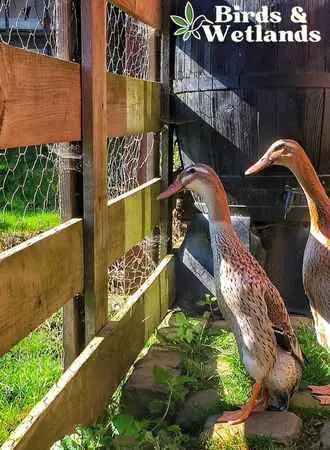
Building a sturdy fence around your yard is an effective way to protect your ducks. A well-built fence will keep any predators at bay while keeping animals like feral cats, rabbits and mice out of your yard. These critters attract other predators, so keeping them away from your backyard can help minimize predator attacks.
Fences will also help to keep larger animals like deer away, ensuring that your ducks are safe even if a larger predator gets past the fence.
Install a Motion Detector Device
Installing a motion detector device on your property can help deter predators. Place these devices at key points in a duck’s habitat and feeding grounds to trigger an alarm immediately when an animal approaches. For instance, you will know if black-feathered birds such as corvids or “crow family” pay a visit to your yard.
Loud sounds not only scare the predator away but also alert you to any potential danger and allow you to act quickly.
Furthermore, by making the ducks more aware of their surroundings, these detectors help to keep them from wandering into danger.
Motion-Activated Animal Repellent & Sprinkler
Protect your ducks and other wildlife on your property with an innovative, eco-friendly motion-activated alert sprinkler.

Pros
- Humane and Effective: The Havahart 5277 sprinkler offers a non-toxic, chemical-free solution to alert you when ducks or other animals are near, ensuring their safety.
- Motion-Activated: Equipped with an infrared sensor, this device detects movement up to 35 feet away and releases a burst of water to catch your attention and help protect the animals.
- Adjustable Settings: Customize the sensitivity of the motion sensor and the spray duration to suit your specific needs and prevent false triggers.
- Easy Installation: The device is easy to set up and connects to a standard garden hose, making it simple to deploy in any area of your property.
- Environmentally Friendly: Powered by solar energy and utilizing water as an alert system, the Havahart 5277 is a sustainable and eco-conscious choice for your yard.
Cons
- Limited Coverage: The motion sensor covers a 100-degree arc, which may not be sufficient for larger areas or properties with multiple entry points for animals.
- Weather-Dependent: Since the device relies on solar power, its effectiveness may be reduced during periods of extended cloud cover or in heavily shaded areas.

